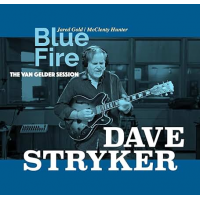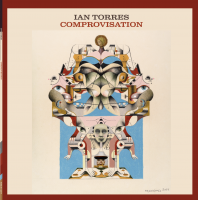Home » Jazz Articles » Album Review » Earl Howard: Strong Force
Earl Howard: Strong Force
Nevertheless, the "improvised chamber music" aesthetic has met with better results in more qualified hands, ostensibly from the jazz realm (Anthony Davis, Anthony Braxton). Composer Earl Howard, who has written numerous scores for wind instruments as well as worked closely with video artists like Nam Jun Paik, wrote the open-form Strong Force in 1999 for the Parabola Arts Ensemble, and though the pedigrees of both composer and ensemble participants are strong, the twain have not quite met in this recording.
The Parabola Arts Ensemble features the composer on synthesizer, pianist Anthony Davis, cellist Ernst Reijseger, percussionist Gerry Hemingway and harpist Anne LeBaron. The first two movements of Strong Force are rather reminiscent of Japanese composer Toru Takemitsu, specifically his works for similar instrumentation: a veritable stew of bent and bowed tones from cello and cymbals, matched up against dissonant tone rows from harp and piano. Howard’s synthesizer is tastefully applied, only occasionally seeping out from the mix to guide the improvisers in a particular direction.
The third movement seems to allow the most openness for the creative player; it begins with a duel between Reijseger and Hemingway, quickly building into a characteristically loud Hemingway solo. Reijseger unfortunately only gets two solo spots, and though he is a master of non-traditional cello technique (preparation; bowing everywhere but the strings; use of the instrument’s body), his solos are rather interchangeable here. Davis also has room to stretch out in this section; his characteristically stark, repetitious approach is in full force here, though the romanticism that peppered his work of the ‘80s is, at least in this context, somewhat absent.
In the final two movements of the piece, it seems as though a bit of steam is lost—what was a curiously twisted polytonality in the first two movements and vigorous solos in the third becomes a muddy and fairly nondescript stew by the fourth and fifth (each of which clock in at just under five minutes).
Judging by the first half of the piece, it might have been better to follow the score more strictly, allowing improvisation in brief passages that still adhere to the composer’s direction. Or, the Kagel approach of very little form could have been used, allowing the players’ spontaneous choices to take over. It seems that failure comes when one element usurps the other, throwing up a disparity that is difficult to rectify. That is what made Schuller’s music less than feasible, and what in the end makes Strong Force an unsuccessful effort.
Track Listing
1. Strong Force, Pt. 1 (Howard) - 17:01 2. Strong Force, Pt. 2 (Howard) - 11:34 3. Strong Force, Pt. 3 (Howard) - 12:41 4. Strong Force, Pt. 4 (Howard) - 4:55 5. Strong Force, Pt. 5 (Howard) - 4:57
Personnel
Earl Howard
saxophoneAnthony Davis - Piano; Gerry Hemingway - Percussion; Anne Lebaron - Harp; Ernst Reijseger - Cello; Earl Howard - Synthesizer.
Album information
Title: Strong Force | Year Released: 2004 | Record Label: Mutable Music
Tags
PREVIOUS / NEXT
Support All About Jazz
 All About Jazz has been a pillar of jazz since 1995, championing it as an art form and, more importantly, supporting the musicians who make it. Our enduring commitment has made "AAJ" one of the most culturally important websites of its kind, read by hundreds of thousands of fans, musicians and industry figures every month.
All About Jazz has been a pillar of jazz since 1995, championing it as an art form and, more importantly, supporting the musicians who make it. Our enduring commitment has made "AAJ" one of the most culturally important websites of its kind, read by hundreds of thousands of fans, musicians and industry figures every month.

















